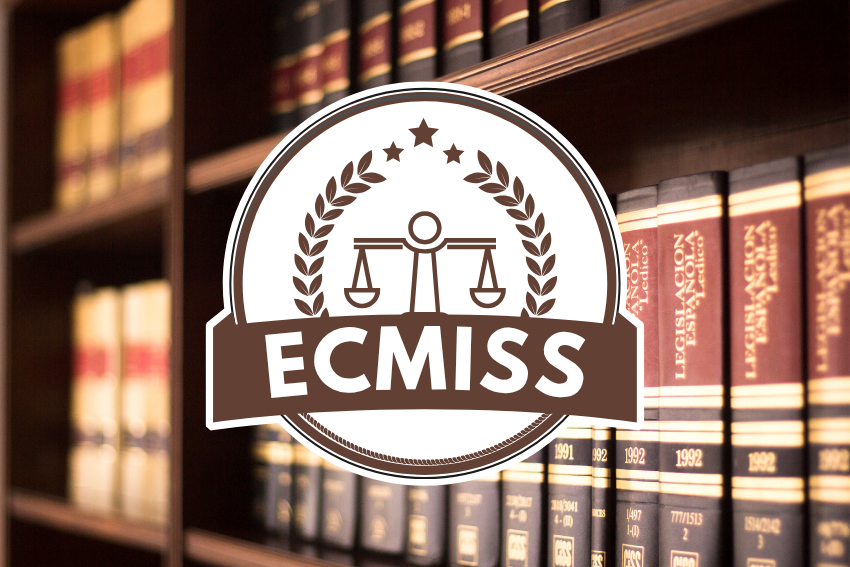Introduction
ECMISS is changing the way courts operate. The Electronic Court Case Management Information System is a digital tool designed to streamline judicial processes. Courts have long struggled with paper-based systems. Mountains of files. Endless delays. Frustrated citizens. ECMISS steps in to tackle these challenges, bringing efficiency and clarity to case administration.

What is ECMISS?
The Electronic Court Case Management Information System, or ECMISS, is a software platform that digitizes court operations. It replaces outdated paper records with a centralized digital system. Think of it as a digital librarian for the courts. It organizes case files, tracks progress, and ensures nothing gets lost in the shuffle. Courts can manage everything from case filings to scheduling hearings with just a few clicks.
This system isn’t just about going paperless. It’s about making the judicial process faster and more transparent. ECMISS helps judges, clerks, and lawyers access case details instantly. No more digging through filing cabinets or waiting for documents to be mailed. It’s a game-changer for an overburdened system.
Why Courts Need ECMISS
Court systems worldwide face similar issues. Backlogs pile up. Cases drag on for years. Paper records get misplaced or damaged. These problems frustrate everyone involved—judges, attorneys, and citizens seeking justice. ECMISS addresses these pain points head-on.
For one, it cuts down on administrative errors. Manual data entry often leads to mistakes. A misspelled name or wrong case number can delay proceedings. ECMISS automates much of this, ensuring accuracy. It also saves time. Clerks no longer spend hours sorting through paperwork. They can focus on higher-value tasks, like assisting judges or helping the public.
Another big win? Accessibility. With ECMISS, authorized users can access case information from anywhere. A judge working from home? A lawyer preparing for a hearing? They can log in and get what they need instantly. This flexibility speeds up decision-making and keeps cases moving.
Key Features of ECMISS
So, what makes ECMISS so effective? Let’s break it down.
- Case Tracking: Every case gets a digital profile. Users can see its status, upcoming hearings, and related documents at a glance. No more guesswork.
- Automated Scheduling: ECMISS assigns hearing dates based on court availability. It reduces conflicts and ensures smoother operations.
- Document Management: All case files—petitions, motions, rulings—are stored digitally. Users can search and retrieve them in seconds.
- Notifications: The system sends alerts for deadlines, hearings, or updates. This keeps everyone on the same page.
- Reporting Tools: ECMISS generates reports on case progress, court performance, and more. Judges and administrators can spot bottlenecks and act quickly.
These features work together to create a seamless experience. They save time, reduce errors, and make the judicial process more transparent.
Benefits for the Judicial System
ECMISS isn’t just a tool—it’s a lifeline for courts drowning in paperwork. Here’s how it transforms the system.
Faster Case Processing
Delays are the bane of any court. ECMISS speeds things up by automating repetitive tasks. Filing a motion? Done in minutes. Scheduling a hearing? Handled instantly. By cutting down on manual work, ECMISS helps courts clear backlogs and resolve cases faster.
Improved Transparency
Citizens deserve to know what’s happening with their cases. ECMISS makes this possible. Public-facing portals allow litigants to check case statuses online. No need to call the clerk’s office or visit the courthouse. This openness builds trust in the judicial system.
Cost Savings
Paper-based systems are expensive. Printing, storing, and transporting documents add up. ECMISS eliminates much of this cost. Digital storage is cheaper and more secure. Courts can redirect those savings to other critical areas, like hiring more staff or upgrading facilities.
Better Collaboration
Judges, clerks, and attorneys all need to work together. ECMISS makes this easier. Everyone accesses the same up-to-date information. Lawyers can submit filings electronically. Judges can review documents before hearings. It’s a team effort, streamlined by technology.
Challenges of Implementing ECMISS
No system is perfect, and ECMISS comes with challenges. For one, transitioning to a digital platform takes time. Courts must train staff to use the system. Older employees, used to paper records, might resist the change. Training programs and user-friendly interfaces can help ease this transition.
Another hurdle is cost. While the system saves money long-term, the initial setup can be pricey. Courts need to invest in hardware, software, and IT support. For smaller jurisdictions with tight budgets, this can be a barrier. However, grants or government funding can offset these costs.
Data security is another concern. Court records contain sensitive information. ECMISS must have robust encryption and access controls to prevent breaches. Regular audits and updates are crucial to keeping the system secure.
Real-World Impact
Courts using ECMISS are already seeing results. Take a mid-sized court in Ohio, for example. Before ECMISS, they faced a backlog of over 5,000 cases. After implementing the system, they cut processing times by 30%. Judges could access case files instantly, and clerks spent less time on paperwork. The result? Faster justice for citizens.
Another success story comes from a rural courthouse in Texas. They struggled with lost files and delayed hearings. ECMISS changed that. By digitizing records and automating scheduling, they reduced case delays by 25%. Attorneys reported better communication with the court, and citizens appreciated the online access.
The Future of ECMISS
The Electronic Court Case Management Information System is just the beginning. As technology evolves, so will ECMISS. Future updates could include artificial intelligence to predict case outcomes or analyze trends. Imagine a system that flags potential delays before they happen. Or one that suggests optimal hearing schedules based on past data.
Integration with other systems is another possibility. ECMISS could connect with law enforcement databases or legal research platforms. This would create a more cohesive judicial ecosystem, where information flows seamlessly between agencies.
Conclusion
ECMISS is transforming court case administration. It’s not just about going digital—it’s about making justice faster, fairer, and more accessible. By automating tasks, reducing errors, and improving transparency, the system empowers courts to serve their communities better. Sure, there are challenges. Change is never easy. But the benefits—faster cases, lower costs, happier citizens—are worth it.
As more courts adopt ECMISS, the judicial system will continue to evolve. Paper files will become a relic of the past. In their place? A streamlined, efficient, and transparent system powered by the Electronic Court Case Management Information System. The future of justice looks bright.



